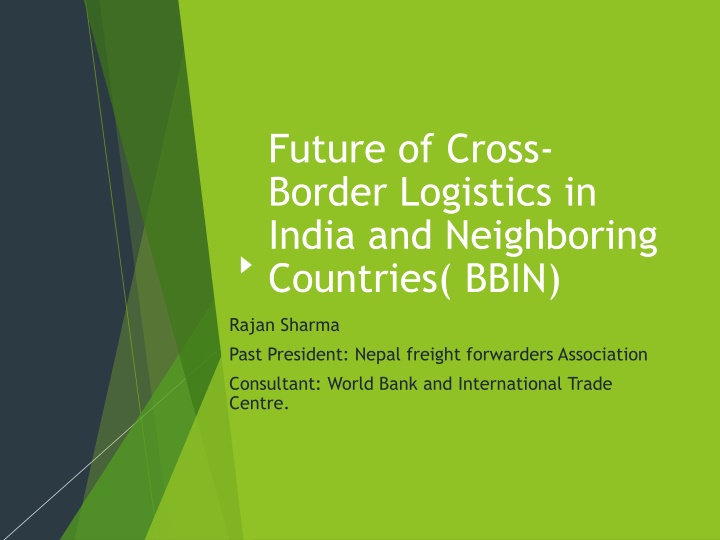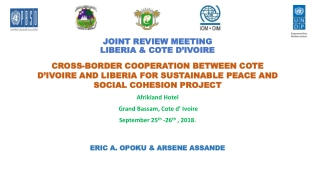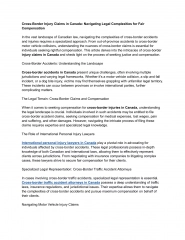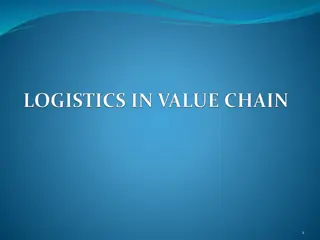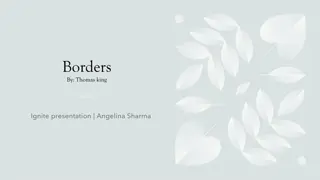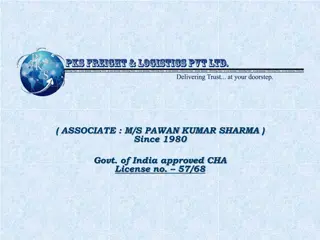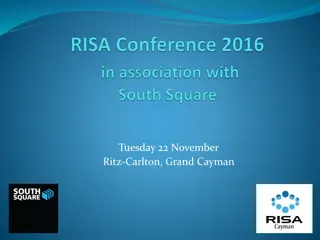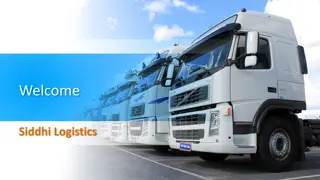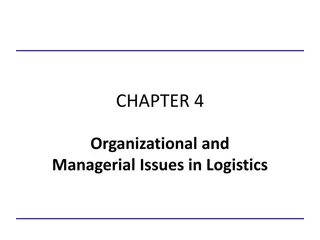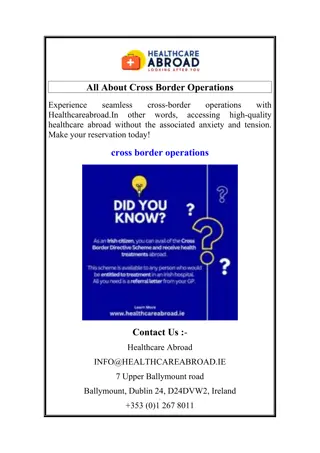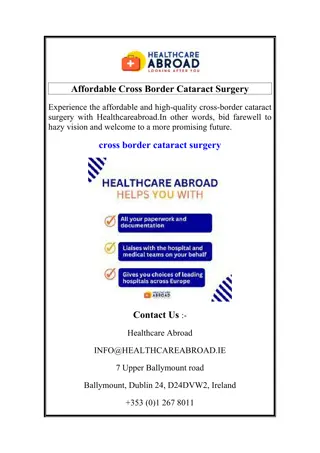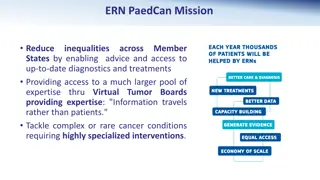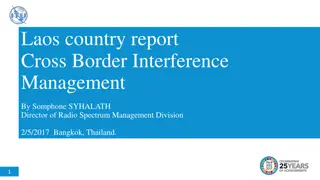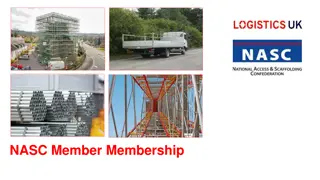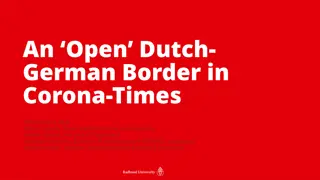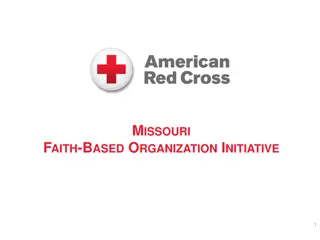Future of Cross-Border Logistics in BBIN Region
Rajan Sharma, a seasoned expert in logistics and trade, explores the future of cross-border logistics in India and neighboring BBIN countries. Drawing from his experience as the past President of the Nepal Freight Forwarders Association and his consultancy roles with the World Bank and International Trade Centre, Sharma provides valuable insights into the challenges and opportunities in this dynamic industry landscape. His analysis sheds light on the evolving trends and potential strategies for enhancing cross-border logistics efficiency and connectivity in the region.
Download Presentation

Please find below an Image/Link to download the presentation.
The content on the website is provided AS IS for your information and personal use only. It may not be sold, licensed, or shared on other websites without obtaining consent from the author.If you encounter any issues during the download, it is possible that the publisher has removed the file from their server.
You are allowed to download the files provided on this website for personal or commercial use, subject to the condition that they are used lawfully. All files are the property of their respective owners.
The content on the website is provided AS IS for your information and personal use only. It may not be sold, licensed, or shared on other websites without obtaining consent from the author.
E N D
Presentation Transcript
Future of Cross- Border Logistics in India and Neighboring Countries( BBIN) Rajan Sharma Past President: Nepal freight forwarders Association Consultant: World Bank and International Trade Centre.
Objective: Identify constrains of cross- border trade within the BBIN region. Provide the way froward for the future. Expected outcomes.
Constrains A. The chest high mind set is missing among government and private sector involved in trade facilitation. Their inability to perceive and plan right strategy. B. Weak negotiation power of government with transit providing countries and lack of right coordination among stakeholders within the region . Each countries focuses on issues within the boarder and not beyond boarder. C. Linking the plans , policies and project based on the multimodal transport system to enable smooth supply of goods based on one logistic policy. Single policy in all BBIN countries . National development plan of nations does not compliment to each other like the logistic policy and Master plan for multimodal and intermodal transport. D. Risk : terror , arms and illegal movement of passengers and goods. Risk of products and service trade being diverted form one country to another.
Constrain E. Soft and hard infrastructure .Too much face to face activity due to lack of believe in automated cross boarder trade. The recent RFID and ECTS provisions of Indian customs (F.No.S18-17/2019 A(N) dated:27.1.2021. Uniform basic hard infrastructure and equipment is missing. F. Legal framework to address to transfer of Cost, risk and liability at which point is missing as INCO Terms are misinterpreted resulting to Dispute .Such dispute settlement mechanism is missing. G. Confident on the part of transporters while moving beyond boarders is also feeble due to police harassment, permit failure, accident, sickness and accident or mechanical failure. H. The mechanism of leasing logistic centers and transport engines and government themselves involved in increasing logistic cost by making them their revenue earning units instead of subsiding and reducing cost. I. The present system of handling Transit cargo at Kolkata needs revision as it puts the clearing agents and shipping companies in problem. This needs to be in line with Inco Terms to avoid too much liability.
Conclusion on constrains: RIGHT AUTOMATION RIGHT RIGHT POLICIES THUS: MULTI-PHASE PROGRAMMATIC APPROACH(MPA) (WB) INFRASTRUCTURE
Way Forward: 1. Chang agents: Right role of all stake holders private and government and devoted donor support. Coordinated approach. A transport and passenger facilitation committee (TPFC) with equal number of private and public sector members with an objective of addressing issues and solving problems with flexible mobility. The committee must have sufficient funds to train service providers and government authority, disseminate information both at the boarder points and centre of each countries as well as monitor the flow of goods and people.
The Way Forward. 2. Exchange of information within government agencies along the route ,at the points of transit or Transshipment with automated system which is commonly agreed by countries within the region in a standardized format , fixed days of working and harmonized procedures . The recent ETCS and RFID provisions can be an example to this. 3. Clear cut role and risk of each service provider with identified actors along the supply chain covered by a single document that covers liability and responsibility for all means and mode of transport (An agreement). 4. A National Logistics Efficiency and Advancement Predictability and Safety Act (NLEAPS) adopted by India needs to be in line with other countries as this law tends to define various participants of logistics space and create a light regulatory ecosystem enabling monitor the activities of all stake holders along the supply chain as well as monitor performance of logistic actors .
The Way Forward 5. One transport document Like MTO or other specific to our region must be worked out. 6. The ideas could be taken from the TIR CARNET provision or tailored to our requirement . 7. Incorporate Int'l agreements in bilateral agreements or trilateral or regional agreements, as bilateral agreements supersedes international agreements. 8. For a free flow of vehicles , the operational cost of each country needs to be evaluated to consider a conducive level playing field for all Transport and Service providers.
The way forward 9. Risk faced by transport companies within each country needs to be minimize by developing a private sector company which takes care of the illness of drivers , vehicle Mechanic failure , police harassment, accident, food and prayer rooms ( cultural issues) permits failure. (example :Nepal) 10. The focus needs to be given to SME related to service sector like freight travel companies to enable right movement with the right mode of transport with provision of act . Joint customs inspection where possible. and 11. 12. Warehouse provision with ACT that covers bonded and non bonded warehouse under PPP.
The Way Forward 13. Money flow along the supply chain actors need to be worked out by holding each responsible through a workable procedure .A system that controls money laundering and a mechanism to check the actual cost of good at destination and the price to customers will enable collect right tax and increase revenue. 14. SPS issues : Quality Compliances by identifying the mandatory, voluntary and special standards of importing or exporting country.
Priority to MSME and Project Cargo A simplified provision of handling and transportation of LCL Shipments to cater to the need of MSME's. SMEs being the backbone of our economic activities need special attention and the consolidation of cargo at transit point must be permitted with introduction of trusted traders and authorities' economic operators AEO and other instruments. Project Cargo ,Bulk and Break bulk are equally important and right handling state of at technology will help smooth handling. The focus now is too much on Containerized cargo.
Future Outcome: Employment generated. Livelihood along the corridor will have improved Environment standards complied . Harmonized procedure/documents , standardize automated information/ payment system and tracing and tracking with standardized transport document will be established. Infrastructure standardized. Coordination amongst stakeholders/government organizations will be better. Trade volume will increase. Trade Facilitation improved with infrastructure and automation and right equipment's. Dispute settlement will be better due to rules and regulation being compatible within the region. Cultural and social issues well addressed. Right revenue collected Illegal trade will have been controlled Flow of FDI increased
Final Conclusion Enhanced : Transparency Accountability Traceability and Predictability. Goal: Level playing field for Micro Small and Medium. Feel Good On Trade Facilitation indicatives for all involved in the trading across borders.
Thank you
